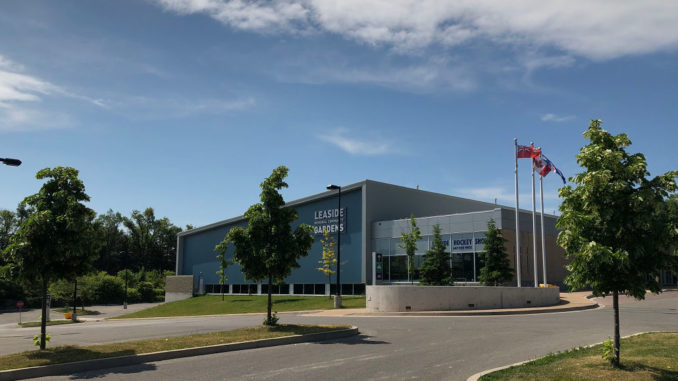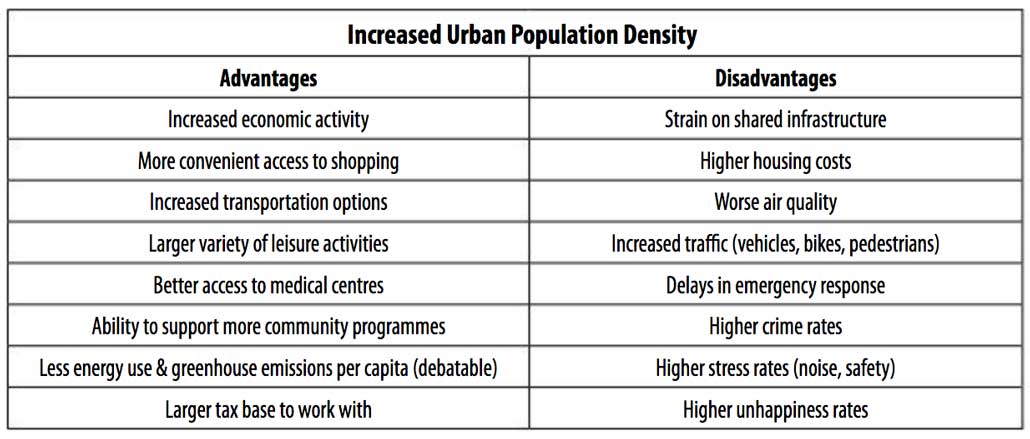
Rat-a-tat-tat-tat. My colleague Geoff Kettel goes down the list. Mid to high intensification around the new Crosstown stations per the GTHA provincial growth plan: Concert Properties at Sunnybrook Plaza, Diamond at Eglinton & Brentcliffe, and RioCan at Eglinton & Laird. Moderate intensification on the collectors and main streets as guided by the Laird in Focus vision. Adding to the barrage of fire, terms such as “gentle intensification” around the “yellow belt” to meet the housing needs of the “missing middle” appear to be more than just whispers. Whenever I read the word “intensification” as it pertains to residential development in Leaside, I can’t help snickering. Face it: at the heart of the matter is the population densification of Leaside and what that will mean for us. Just as Thomas Malthus must have felt back in 1798 – I’m a bit concerned. Sure, there will be eventual benefits, but we should also be prepared for potential costs.
Simple ‘arithmetic density’ calculations are used to compare countries, cities and even neighbourhoods. For example, in 2016 the Fraser Institute reported the population density of Toronto was 4,457 people per square kilometre. For comparison, the same report listed Hong Kong at 25,719, New York at 10,935, London at 11,054, and Vancouver at 5,493. Statistics Canada’s 2016 Neighbourhood Profiles report showed Leaside-Bennington had a population density of 3,596. For comparison, “Mt. Pleasant East” was 5,411, “Forest Hill South” was 4,380, and “Yonge-Eglinton” was 7,162. Experts note it is questionable that countries or even cities can be compared using such a blunt tool because all geographies are not created equal (e.g., can’t account for a non-usable area such as the CPR railway, or varying housing types, proximity to city centres, employment zones, or infrastructure).

Fastest growing community
Even so, curious and armed with these numbers, I ran a few scenarios for my own analysis. I applied the Yonge-Eglinton density ratio to Leaside and found we would need to add 16,600 net new residents to arrive at a similar level of density. Using the Lawrence Park South ratio, we would need to add 5,050 new residents. Using 10,825 as the midpoint of net new residents between the two, I calculated that the average growth rate of new Leaside residents would be 6.1 per cent per year over an eight-year period to reach the target. Coincidently, last week Maclean’s published its 2019 list of the fastest-growing communities in Canada over the past five years. Should our population grow at a 6.1 per cent rate, Leaside would top the list – ahead of first place Airdrie, AB (5.7%) and Milton, ON (5%).
For a more comprehensive view of population densities for comparative purposes, we need to consider the concept of “lived density,” which incorporates the ideas of ‘standard of living’ and ‘quality of life’ so that a community’s overall “livability” can properly be considered, before a sensible discussion comparing population densities can occur.
The International Making Cities Livable movement acknowledges factors that improve quality of everyday life (i.e. safe streets, human-scale mixed-use, 10-minute neighbourhoods, pedestrian and bike networks, places to foster community) designed to improve residents’ health and wellbeing. So, even if a city or neighbourhood is densely populated, it may still be able to offer strong characteristics that make living there worthwhile. In the examples I reviewed, high livability cities included Sydney, Stockholm, Brussels, and Vancouver. Although Singapore, Tokyo and London were much more densely populated, they still were deemed livable.
Now’s the time to secure the resources we need
Regardless of the final scope and pace of change, the point is that the decision to move down this path has been made. As a result, our collective attention needs to focus on ensuring that Leaside’s ‘carrying capacity’ will be able to sustainably support the total number of new residents we expect in the future, without further degrading our current level of resources, many of which are already aging and under strain. I remain somewhat confident the City has the expertise to ensure infrastructure and our public services such as schools, police services, utilities, transportation, increased parks & recreational facilities, upgraded community spaces like ice pads, churches, and the library, as well as contributions towards protecting the environment, our community character…will be ready to handle the increased load. If not, then NOW is the time to identify foreseeable shortcomings, and to bring this to the attention of the individuals and entities responsible for resource budgeting and allocation. NOW is the time, while the planning is taking place, to secure the resources we need to ensure that Leaside remains a place we all can live, work and play – happily ever after. The end.
How will an increase in our population density will affect Leaside’s liveability? Where should additional funding be directed to ensure we have the adequate carrying capacity to support future growth? Let us know at .


